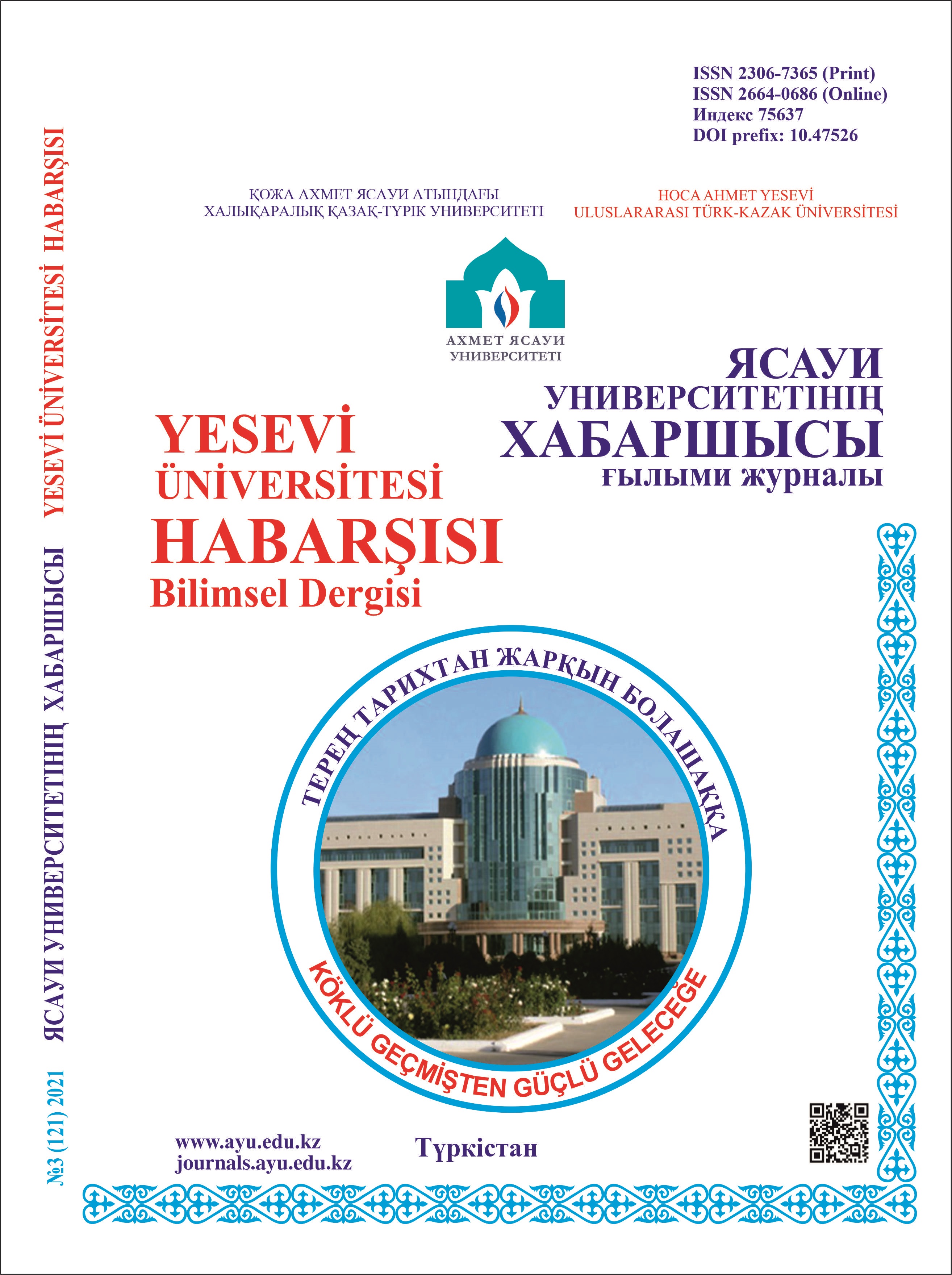Features of Training Future Physics Teachers in Modern Virtual Laboratories Creation Methods
54 54
Keywords:
virtual laboratory work, teaching physics at school, remote laboratory performance, visualization technology, computer methods of physics.Abstract
A teacher of physics can help school learners to look at natural phenomena from an analytical point and awake students' interest in the physics subject with a laboratory work. This article reviews the laboratory work conducted using virtual tools and discusses the features of the methodology for usage of create virtual tools in situations where they are necessary. There was a discussion about during state of laboratories in the current school classrooms. It has been detected that material laboratory complexes are not enough to cover all subjects of natural sciences and that the learner and teacher can conduct laboratory work remotely through virtual laboratories. In this case, a review of the technologies of using ready-made virtual laboratories, making them different if they do not meet the requirements. There was discuss a technology of virtual laboratory that can show nature of dynamic phenomena created according a manual that named as “computer methods of physics”. By this technology created a virtual laboratory environment named "PVL Kush momenti" that describes the interaction of forces; discussed the advantages and disadvantages of this environment and compared on the other alternative environments. Furthermore, had been determine the tendencies of creating laboratories for other school subjects, and the requirements for a virtual laboratory to determine the usage of common algorithm. Additionally, wrote about psychological techniques that can used to refute the scepticism about the difficulty of creating a virtual environment.
To sum up, the authors gave an opinion that virtual laboratory is a tool that helps to understand and predict natural phenomena, and confident that there is not difficult to use them. They are believe that virtual laboratories make a great contribution to the successful implementation of educational programs and they offer the technology to create virtual worlds.
References
REFERENCES
Klaus Shvab. Tortіnshі industrialdyq revaliucia [The Fourth Industrial Revolution]. – Almaty: Ulttyq audarma biurosy, 2018. – 200 b. [in Kazakh]
Memleket basshysy Qasym-Zhomart Toqaevtyn «Adіlettі Qazaqstannyn ekonomikalyq bagdary» atty Qazaqstan halqyna Zholdauy [Address of the President of Kazakhstan Kassym-Jomart Tokayev to the people of Kazakhstan named “Economic Orientation of Fair Kazakhstan”]. [Electronic resource]. URL: https://egemen.kz/article/348193-prezident-qasym-zhomart-toqaevtynh-qazaqstan-khalqyna-zholdauynynh-tolyq-matini (date of access 27.02.2024) [in Kazakh]
Karimova A.T., Kurbanbekov B.A., Choruh A. Mekteptegі zharatylystanu panderіn oqytuda zamanaui virtualdy zerthanalarmen zhumys zhasau erekshelіkterі [Features of working with modern virtual laboratories when studying natural science in school] // Abai atyndagy QazUPU-n habarshysy «Pedagogika gylymdary» seriasy. – 2023. – №4(80). – B. 294–303. [in Kazakh]
Kang N. Learning to teach science: Personal epistemologies, teaching goals, and practices of teaching // Teaching and Teacher Education. – 2008. – №24(2). – P. 478–498.
Luketic C.D., Dolan E.L. Factors influencing student perceptions of high-school science laboratory environments // Learning environments research. – 2013. – T.16, №1. – P. 37–47.
Goyal S. E-Learning: Future of education // Journal of Education and learning. – 2012. – T. 6, №2. – P. 239–242.
Kolomin V.I., Stefanova G.P. Teoreticheskie osnovy i metodika prepodavania kursa obshei fiziki v bakalavriate universiteta: monografia [Theoretical foundations and methods of teaching a course in general physics in the bachelor's degree program at the university: monograph]. – Astrahan: Izd. dom «Astrahanskiy universitet», 2006. – 276 s. [in Russian]
Agibova I.M., Bedzhanian M.A., Fedina O.V. Ispolzovanie interaktivnyh metodov obuchenia v podgotovke budushih uchitelei matematiki i fiziki [Using interactive teaching methods in training future teachers of mathematics and physics. Problems of modern pedagogical education] // Problemy sovremennogo pedagogicheskogo obrazovania. – 2021. – №70-2. – S. 6–13. [in Russian]
Ponomareva E.A. Izuchenie pedagogicheskih poniatiy, sviazannyh s terminami «eksplicitnyi» i «implicitnyi» [Study of pedagogical concepts related to the terms “explicit” and “implicit”] // Mir nauki, kultury, obrazovania. – 2015. – №2 (51). – S. 133–138. [in Russian]
Dainek E.A., Ipalakova M.T., Coi D.D., Bolatov Zh.Zh, Seitnur A.M.. Innovacionnye tehnologii v prepodavanii fiziki v vuze [Innovative technologies in teaching physics at the university] // «Bіlіm beru mazmunyn zhanartu zhagdaiynda pedagogikalyq kadrlardy kasіbi daiarlau: quzyrettіlіk, tehnologia, innovacia» atty respublikalyq gylymi-adіstemelіk konferenciasynyn materialdary. 12 sauіr 2019 zhyl. Atyrau: H. Dosmuhamedov atyndagy Atyrau memlekettіk universitetі, 2019. – 151 b. [in Russian]
Shaimerdenova G.Z., Sholpanqulova G.A. Innovacialyq virtualdy zerthanalyq zhumystardy quru men qoldanu adіstemesі. Biologia: oqu quraly [Methodology of creating and using innovative virtual laboratory works. Biology: training manual]. – Taraz: Dulaty university, 2021. – 120 b. [in Kazakh]
Jack Xu. Practical WPF Graphics Programming – Advanced.NET Graphics Development with the Windows Presentation Foundation. – 1st ed. – UniCAD Publishing, Phoenix, United States of America, 2007. – 689 p.
Turequlova A.Q., Shektibaev N.A. Zerthanalyq eksperimentter arqyly oqushylardyn fizikaga degen qyzygushylygyn arttyru [Increasing Students' Interest in Physics through Laboratory Experiments] // Iasaui universitetіnіn habarshysy. – 2024. – №3 (133). – B. 329–341. https://doi.org/10.47526/2024-3/2664-0686.96 [in Kazakh]

